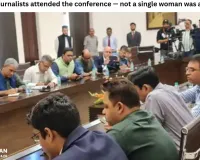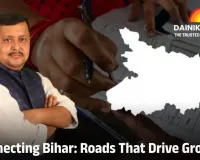1 Lakh Single-Teacher Schools in India: Ministry of Education Data Reveals Stark Reality
Digital Desk

New data from the Union Ministry of Education has revealed a concerning picture of India’s schooling system — there are 1,04,125 single-teacher schools across the country, educating 33,76,769 children. On average, each of these schools has about 34 students, exceeding the norms prescribed under the Right to Education (RTE) Act, which mandates at least one teacher for every 30 students at the primary level and 35 students at the upper primary level.
While Andhra Pradesh has the highest number of such single-teacher schools, Uttar Pradesh leads in terms of total student enrollment in them. According to the Ministry’s data for the academic year 2024–25, the number of single-teacher schools has gradually declined from 1,18,190 in 2022 to 1,10,971 in 2023, but the teacher–student ratio remains unbalanced.
A senior official from the ministry noted that Chandigarh and Delhi lead the nation in average student enrollment per school, with 1,222 and 808 students respectively. In contrast, regions like Ladakh (59 students), Mizoram (70), Meghalaya (73), and Himachal Pradesh (82) have far smaller school enrollments.
Teacher Count Crosses 1 Crore for the First Time
For the first time in any academic session, India’s total number of teachers has surpassed 1 crore (10 million), according to the Unified District Information System for Education (UDISE) report for 2024–25. UDISE is the government’s central database for collecting education-related statistics from all schools nationwide.
In the 2023–24 academic year, there were 98.83 lakh (9.883 million) teachers, which has now increased to 1 crore 1 lakh 22 thousand 420 (10.122 million). Of these, 51% (5.147 million) teach in government schools.
Sharp Rise in Female Teachers
The past decade has witnessed a significant increase in the number of female teachers. In 2014–15, India had 45.46 lakh male teachers and 40.16 lakh female teachers. By 2024–25, these numbers have shifted to 46.41 lakh men and 54.81 lakh women, reflecting an 8% rise in female representation in the teaching workforce.
This change is largely driven by recruitment trends — out of 51.36 lakh new teachers appointed since 2014, 61% have been women.
Improving Student–Teacher Ratios and Dropout Rates
The student–teacher ratio (STR) has improved significantly over the last decade.
- At the middle level, it dropped from 26 students per teacher to 17.
- At the secondary level, it improved from 31 to 21.
This means teachers now have fewer students per classroom, allowing for more personalized attention and better learning outcomes.
The dropout rate has also declined:
- Secondary level: from 10.9% (2023–24) to 8.2% (2024–25)
- Middle level: from 5.2% to 3.5%
- Primary level: from 3.7% to 2.3%
Meanwhile, retention rates — the percentage of students continuing their education — have improved:
- Primary level: 85.4% → 92.4%
- Middle level: 78% → 82.8%
- Secondary level: 45.6% → 47.2%
The enrollment rate at the secondary level has also increased to 68.5%.
Regional Disparities and Inequalities
The data also highlights deep inequalities across states.
- In Jharkhand, a teacher handles 47 students on average, whereas in Sikkim, the number is just 7.
- West Bengal has the highest proportion of primary schools (80%), while Chandigarh has the lowest (3%).
- Chandigarh also records the highest average student enrollment per school (1,222 students), while Ladakh has the lowest (59 students).
When it comes to Gross Enrollment Ratio (GER) — the percentage of children enrolled at each education level — Bihar ranks the lowest across all stages:
- Upper Primary: 69%
- Secondary: 51%
- Higher Secondary: 38%
On the other hand, Chandigarh leads the country with exceptionally high GERs — 120% at Upper Primary, 110% at Middle, and 107% at Higher Secondary levels.











